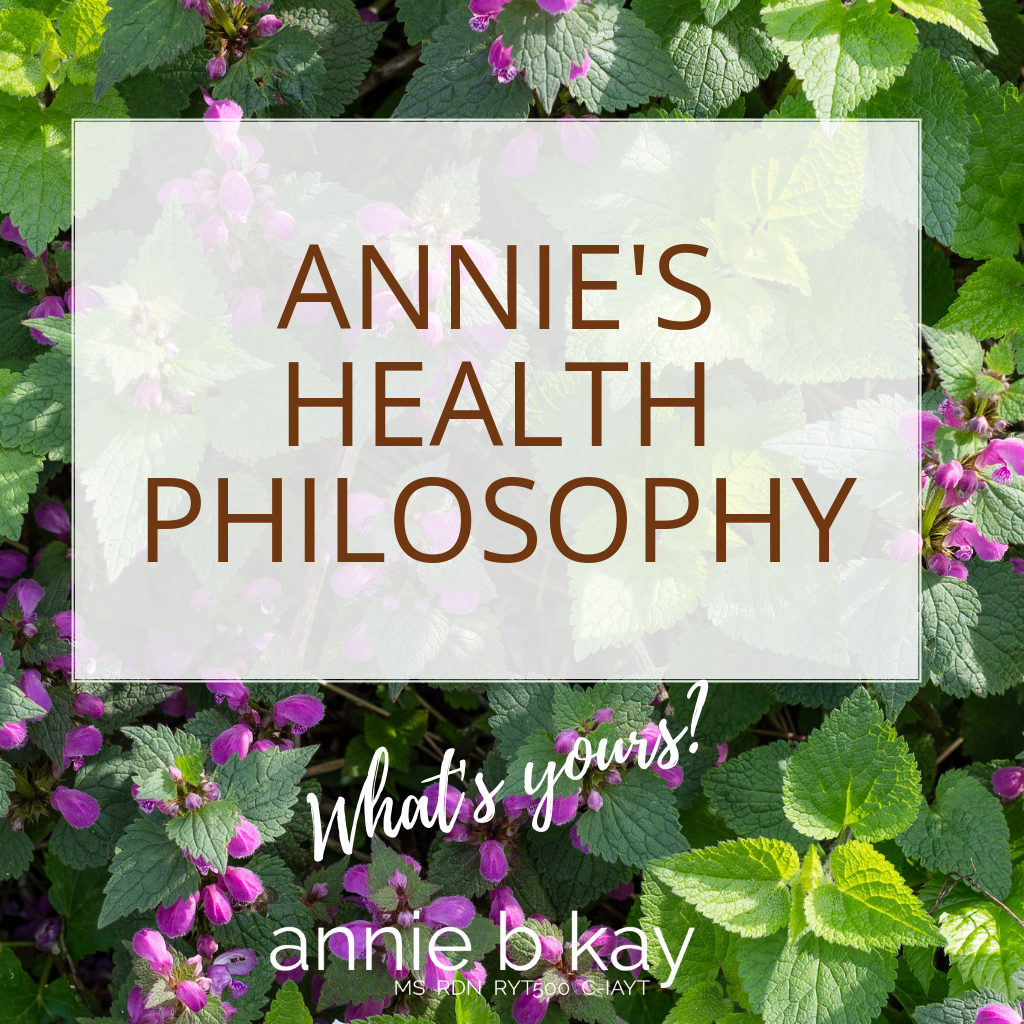
Hi, I’m Annie
I’ve been a clinical nutritional biochemist for over 20 years, a yoga teacher and therapist for 15, and a student of the psychology of how people change and of consciousness for all my career.
Through my years of helping groups and individuals improve their health through lifestyle, I have seen hundreds (maybe thousands) of people who want to eat a healthful diet that supports who they are, but don’t.
It’s Tough to be Healthy
They can’t get started, can’t sustain it or get sidetracked by things that don’t work. It can be nearly impossible to eat well in our current (nutritionists call it toxic) nutrition environment.
Our modern culture is filled with mixed messages about food, weight, and how we should look and feel. The same is true for other aspects of healthful lifestyle – we want to be physically active yet our worlds are set up to be sedentary. We want to practice mindful resilience and stress-management yet we don’t have time because of the 24/7 culture of work, family, life.
Where I Fit In
I am an unapologetic proponent of spirituality as essential to health. Mind body and spirit have been fractured in our modern culture, and re-uniting and fully occupying our multidimensional selves in balance with the earth is the path forward that resonates for me.
One of the gifts of living right here and now is that we have the potential to be the re-integrators. We have at our fingertips the modern health sciences, and we also have new and accessible interpretations of ancient wisdom-sciences such as shamanic plant work, Ayurveda and tantra. Many practices from these wisdom traditions are proving to be effective modalities for addressing the mind-body-spirit split and toxicity of modern life.
Here’s How I see Health
Practicing an integrated life (imperfectly but regularly) maintains wellness and supports dynamic well-being. For a variety of reasons, most people don’t or are not able to sustain regular practice. Enjoying a plant-based diet, moving, taking time for rest and contemplation, and connecting with family like-minded people are components of a life that keep things in dynamic balance. Your unique variation on that lifestyle fuels your life force – healing is a feeling. But life, for nearly everyone, inevitably becomes imbalanced. It is our nature and indeed the nature of life here on earth to become imbalanced.
I also think that feeling bad about ourselves is overall the largest chronic health problem. Please please don’t feel bad about the choices you make. It’s the critical first step to change.
And Healing
The opportunity of imbalance is to learn more about who you are and why you are here.
You can become a discerner of the array of therapeutic options from evidence-based and wisdom realms, or find others you trust to help you sort it out. You can become a students of who you are – each of us are unique, and what works for someone else will not necessarily work for you. Then you can become a thoughtful experimenter of what works.
With time, life comes into a (often new) balance. Dynamic, changing balance that requires ongoing tending and practice.
It’s a long-term project and a lifelong dance. The alternative, for many, is to get sick before your time. You can do this. I’m honored to share what I know to show you how.
What’s your health philosophy? What’s most important for your health and well-being? I want to know!
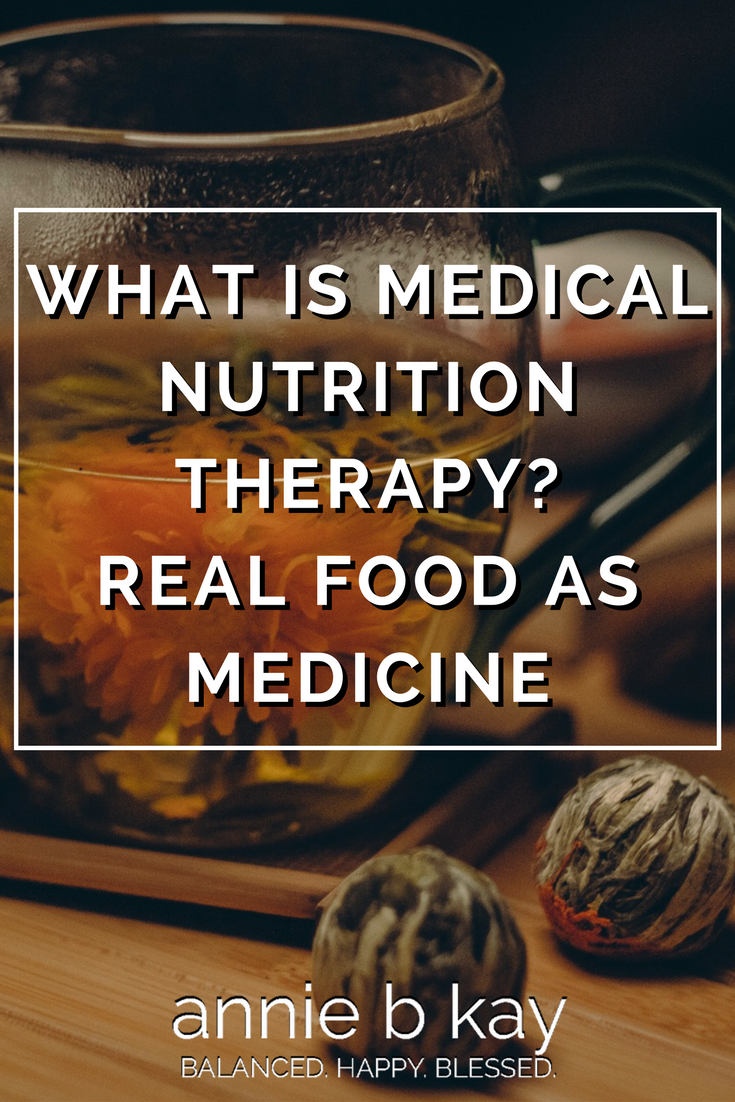
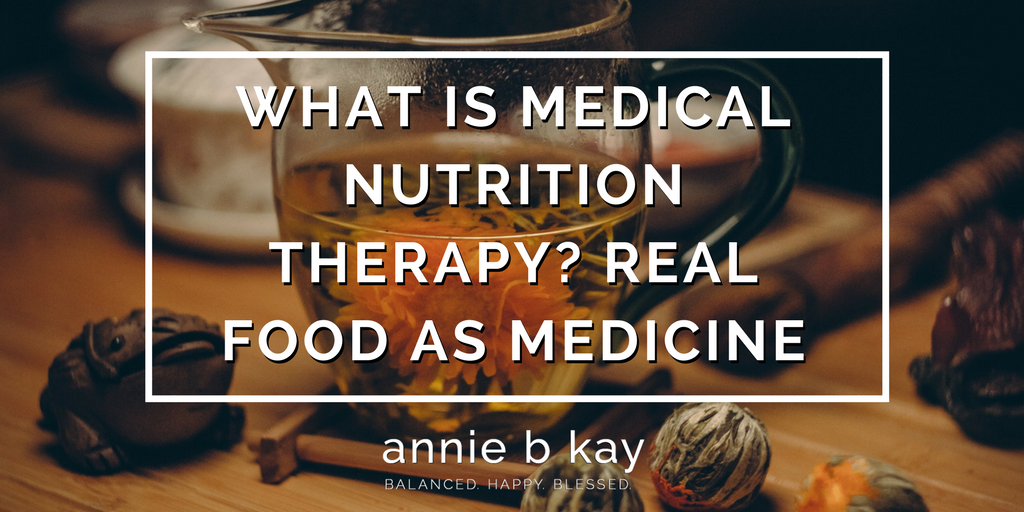
We are in the era of the nutritionist. There is so much confusion around food and nutrition, and so much wacky advice flying around. This while Americans are just not able to make it to the basics of healthful eating. Nutrition-related chronic diseases continue to be the primary health issues, and each of us has our own variation of health and disease.
Because we are in a time when so much that sounds like nutrition is actually marketing and bluster, and so many who call themselves experts are so far from it, confusion reigns. Enter RDNs (Registered Dietitian Nutritionists) and MNT (Medical Nutrition Therapy). If you know me, you know that I am a mind-body therapist – I use things like meditation and gentle yoga practice as tools to help us cultivate the best of ourselves, and soothe us as we gather our courage and strength to sing our song, to sing our note.
What is MNT?
There is a large body of evidence that tells us how to manage a range of health and medical conditions with food and nutrition. MNT, or medical nutrition therapy, uses that evidence and through a qualified therapist, translates that evidence into healing. While there is a range of nutritionists operating today, with various levels of education and experience, and I honestly believe there is room for everyone, I am partial to those who have a 4-year science degree and access to the Academy of Nutrition and Dietetics Knowledge Center for working with people with a medical condition. I am biased for sure, being one who sweated through all that nutritional biochemistry and worked in an ICU (intensive care unit of a hospital) writing TPN (total parenteral nutrition) orders to keep people alive until they could eat. Then I taught at Kripalu for nearly a decade, watching how mind-body used skillfully helped people with the will and knowledge transform. The combination of clinical skills and experiential practice are, in my opinion, the sweet spot when it comes to healing nutrition-related issues.
What conditions are we talking about?
There are guidelines for a range of medical conditions. Those I am well-versed in include:
- Weight gain – from adolescents to adults, and family-based, for any reason
- Eating Disorders, emotional eating and disordered eating
- Unexpected weight loss due to cancer, HIV/AIDS or other chronic condition
- Pre-diabetes and diabetes
- Cancer – prevention, management and prevention of recurrence
- Heart Disease – prevention, management
- High Blood Pressure
- High Cholesterol
- Digestive approaches to auto-immune conditions (Fibromyalgia, Rheumatoid Arthritis, and others)
- Digestive distress due to:
- Irritable Bowel
- Crohn’s Disease
- Colitis
- Constipation
- Reflux/Heartburn
- Food Intolerance (lactose-intolerance, gluten, and others), and Allergies
I use an individualized approach. That includes an initial assessment of nutrition-related symptoms and medical history, review of nutrition-related labs and reports, and development of a custom way of eating that you enjoy and that adheres to evidence-based practice.
We then co-create a plan to get there – your way. There is no such thing as failure, no such thing as relapse in this world – but there is learning, through loving self-compassion, how to navigate your life in its fullness. It’s a dance of mindful skillful effort, and surrender (that’s yoga!).
Within that list, do you specialize?
While I can help address any of these conditions, and they all have relating threads, I particularly like to work with weight, women in midlife, and digestive issues. I have also had a personal experience with cancer, so helping people with that interests me.
How much does it cost?
Depends. I am a licensed nutritionist in the state of Massachusetts. If you have a medical condition and live in the great state of Massachusetts, or another state that does not have state licensure, it is worth it to give your insurance company a call to see if our work together can be reimbursed. For this, you will likely need a referral from your primary care doctor.
If you are not insured, in another state with licensure or your insurance doesn’t cover, then you are what clinicians call private pay. It’s likely that our work together could be included in your health spending account if you have one.
Bottom line, if you value your energy level and lifestyle, it’s worth it to have a skilled coach to help you move forward.
My rates are $150/hr, and most people I work with do an initial assessment, then a half-hour twice monthly for 2 months, then monthly for 4 months.
Tell me about telehealth
I’ve partnered with a practice-management group called Healthie. They provide an interface for us to work through, including journaling, billing and video conferencing. So, we can meet face to face in the comfort of your own home! I think telehealth is part of the future of medicine, and I am excited to be part of it.
Ready to make the change? Let’s do it – Make an appointment now .
Questions? I’m all ears.
Be well,
Annie
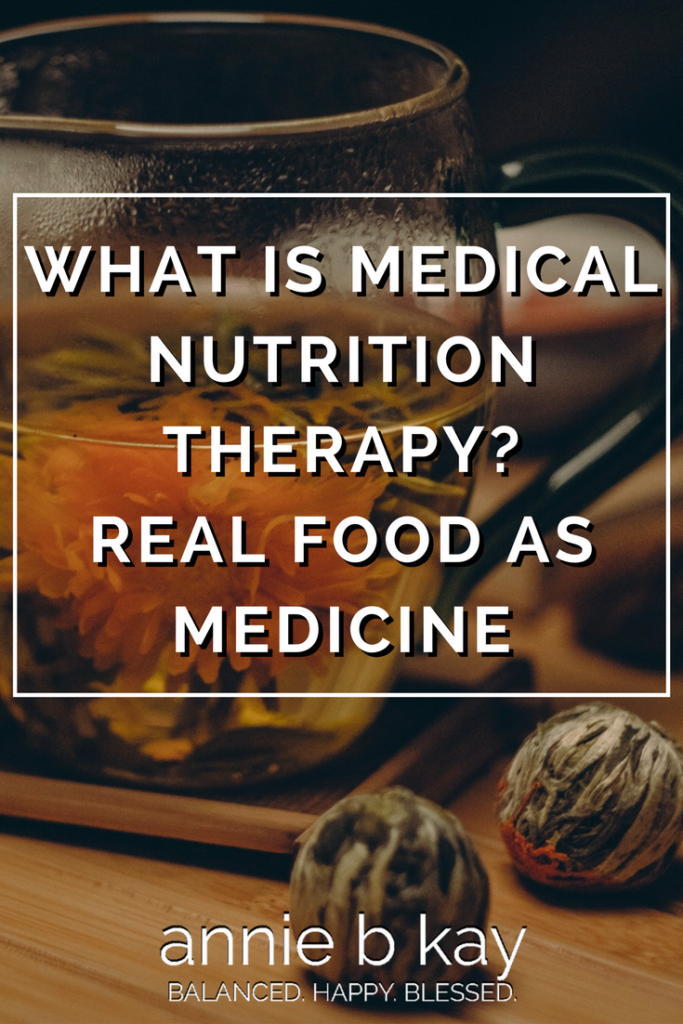
Pinterest
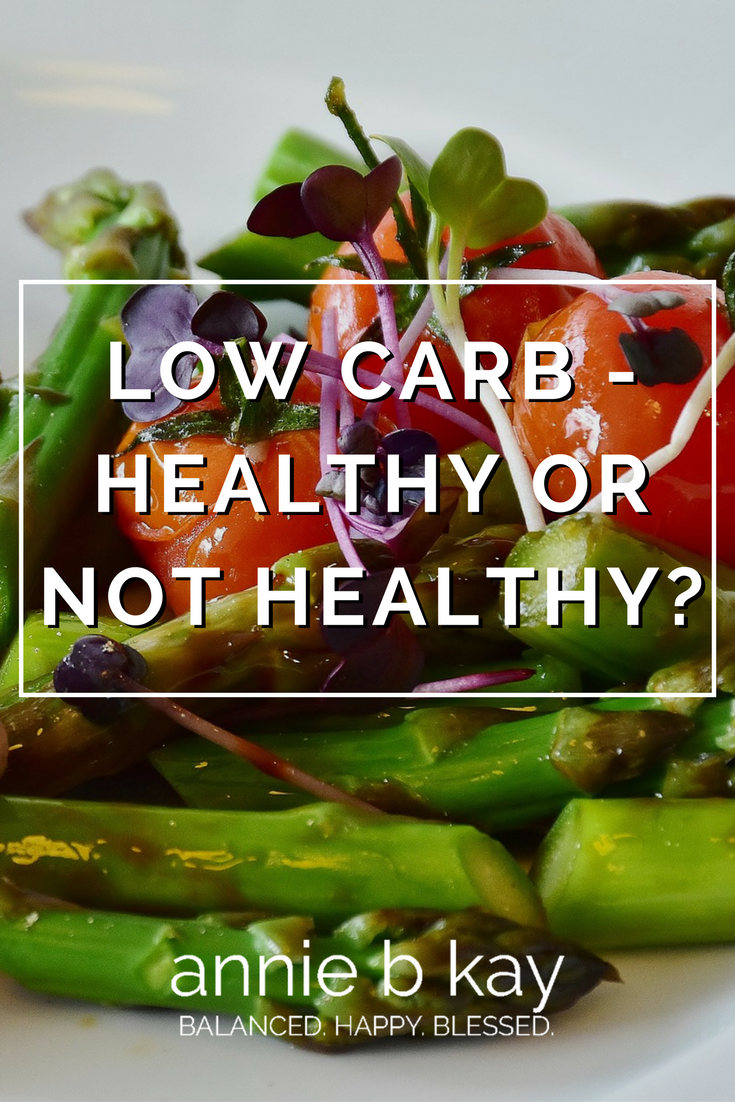
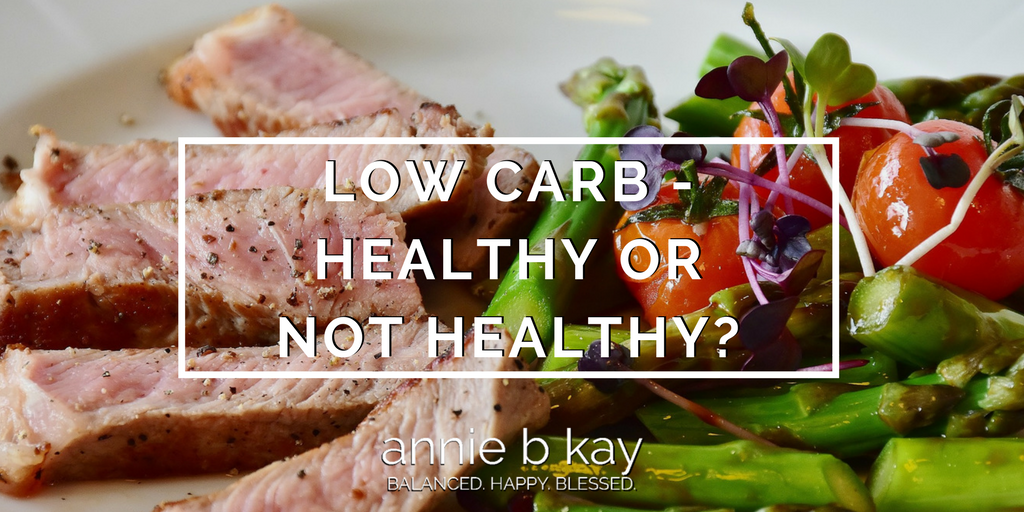
Bread. Chewy crusty bread dipped in a fantastic olive oil and a bit of sea salt. Nutritional friend or foe?
Giving up bread, potatoes, pasta, and even beans because they are carbohydrate-rich foods is a decades-old strategy that’s been presented in a wide variety of popular diets, including Atkins, South-Beach, Paleo, UltraMetabolism, and now Bright-Line.
Just what is a low-carb diet, is it healthy for all, for some or no one?
If you ask 10 people just what a low-carb diet is, you’ll get 10 different answers. That’s because the real clinical data on just what a low-carbohydrate diet is and if, how and who it helps is cloudier than you’d imagine if you believe what you read in the popular press. So, let’s begin with what a low-carbohydrate diet is and is not.
Carb Basics
Carbohydrates break down into sugars and are the energy currency of the body. We need sugar (glucose) for brain function and energy. Most glucose (what the sugar carb breaks down to and the fuel for the body) comes from carbohydrate-containing foods, but the body can also convert protein and fat into glucose (inefficiently and with side effects).
The National Institutes of Health (NIH) set a recommendation of 130 g/day of carbohydrate, based on the amount of glucose needed by the brain and body. The Institute of Medicine (IOM) recommends that 45-65% of daily calories come from carbohydrate. The IOM also set a fiber intake recommendation of 25 g/day for women, and 38 g/day for men.
For comparison’s sake, one serving of carbohydrate (a small slice of bread, or half a banana) contains about 15 g of carbohydrate. If the bread is white bread, it will not have much fiber nor vitamins and minerals unless they are added in the process of fortification. The half banana has about 3 1/2 g of fiber and is a good source of vitamins B-6 and C, potassium and other minerals. So, the banana is what a nutritionist would call more nutrient-dense – that is, calorie for calorie, it gives you lots of nutrients – it’s a higher quality carbohydrate than the bread.
To understand why we’re so low-carb crazy, let’s look at the Standard American Diet (yes, SAD). American men are eating about 287 g of carb per day, and women about 177 g. One-quarter of this carbohydrate intake is from added sweeteners (sugar). Added sweeteners have no nutritive value – not one vitamin or mineral, yet are packed with energy (calories) and absorb very quickly from the gut into the blood stream. How rapidly sugar is absorbed is one of the problems with a highly refined diet high in processed foods (which often acts like just more sugar) and sweeteners – they make you hungry for more. Fiber (which slow the rate that sugar is absorbed from the gut into the blood stream) intakes are about 17 g for men, and 13 g for women. Please note that these intake numbers are changing and not in a more hopeful and healthy direction. Get the picture?
American are eating plenty of carbohydrates, and the type of carbohydrate we are eating is high in sugar and low in fiber. Really low quality, low-nutrition food and lots of it.
A Low-Carb Diet is…
More than the switch from flour and processed grains to whole grains. It’s more than giving up sugar.
A low-carb diet dips below that 130 g/day recommendation of carbohydrates. The most restrictive phase of the Atkin’s diet has 20 gm of carbs in it. When you head down to this level of carbs you are getting your energy from fat and protein. This puts you into ketosis, which is the creation of ketones. While not dangerous in the short term if you drink plenty of water to help your kidney’s flush the ketones out of your body, a common side effect is nasty (nail polish) breath and sweat. It makes you smell, but you’re losing weight and not hungry. My opinion is that over time, this is a very hard diet on your body, and there’s no good data that shows over time people lose more and are healthier from this strategy than others.
So, what do you give up to follow a low-carb diet?
Bread, flour, all grains, even whole grains 🙁 , all fruit :(, starchy vegetables 🙁 like sweet potatoes, corn, peas and squash, beans :(, usually alcohol and of course sugars and sweeteners.
What do you eat?
Lots of meat, fish. Lots of fat. Non-starchy vegetables (which I find many people forget). Usually nuts and nut butters. There are a slew of processed low-carb foods of questionable quality.
Ketosis is different from diabetic ketoacidosis which is a much more dangerous condition of too little insulin and resultant high blood sugar.
Does it work?
Like any highly restrictive elimination diet, low-carb will work because you are eating less. It’s energy-balance basics. What’s handy about low-carb diets is that when you increase your protein and fat intake, you are less hungry than if you ate carbohydrates. So, as a jump-starter to healthier eating and a means of feeling the promise of a lighter body, they can be helpful.
Over the long-term, though, this pattern suffers from what all weight-loss diet patterns suffer from – they are hard to stick with over the long-term and ultimately people struggle to maintain them. There are some additional concerns about this pattern, too. I’ve listed them below.
What the Low-Carb Proponents Forget to Mention
- Your body adjusts to low carb and burning fat as fuel. When you eat a carb again you can become a super-efficient fat-producing machine. So, only do this if you are going to maintain it for the duration.
- A risk for constipation increases – drink lots of water. Your poor kidneys are working triple-time. If you do low-carb, you’ve got to eat your non-starch vegetables, which is a source of fiber that will help prevent constipation. Drink drink drink water.
- Low-carb diets tend to be extra high in saturated fat. While a bit of saturated fat, particularly if it comes from healthful sources like grass-fed organic dairy or grass-fed meats, can be fine, even healthful. When you are eating large amounts of poorer-quality saturated fats, however, the literature still says (despite what you’ve been told of late) you are increasing your risk of heart disease. Sorry. We really don’t know the long-term effects of managing your weight with this strategy. Regular mass-produced bacon, red meat, cream cheese, and butter in limitless qualities is just not healthy.
- Because the glucose you get from carbohydrates is the brain’s (and body’s) preferred fuel source, many following this diet complain of low energy and foggy thinking.
- Most of the quick weight you lose is from water – not fat.
- When you eliminate whole categories of foods, you increase your risk for inadequate nutrition – and low-carb is usually low in a host of vitamins minerals, antioxidants, and fiber. I see this over and over again. Over time, you increase your risk for disease and undermine the smooth functioning of your body.
The Bottom Line?
If you have issues with blood sugar like pre-diabetes, or diabetes, low-carb can be a great strategy to get your blood sugars under control. I’ve seen it work quite a bit. If you know you are over-doing sugar and want a short-cut to moderating, a few days (I find 5 does the trick) of low-carb tends to reduce your cravings. Work with a qualified nutritionist to ensure your diet is rich in nutrients while you do this.
For most of us, let your carb-savvy diet be minimal in refined sugar and refined carbohydrates (cereals, breads, and sweets like cookies and cakes). We all live with or around families and friends, and if your family is anything like mine, cake is part of social events. Have a bite, or a slice and enjoy it. Then get back to your regular practice of whole-food plant-based eating.
The diet that has the most evidence for long-term health is a whole-foods, plant-based diet.
Enjoy nutrient-dense high-quality whole carbohydrates you tolerate like whole grains, whole fruit, vegetables including beans, sweet and white potatoes and other starchy vegetables. If you struggle with weight, have these higher carbohydrate foods with a meal that balances whole food carbohydrates, protein, and fat. A bit of each. The Oldways Ancestral plates do a good job.
We each have a balance of eating, managing stress (which I think is a major cause of weight gain today, in addition to poor-quality food), being physically active in ways you enjoy, and self-acceptance that works. If you struggle with weight, only do the lifestyle changes that you continue forever more. That add to your life rather than restrict. Over time, you will build a healthy and flexible lifestyle.
If you love bread (like I love bread), and are thinking about managing weight, have a little – just not every day at every meal. I think of bread like I think of dessert – it’s a special treat, not an everyday part of my diet.
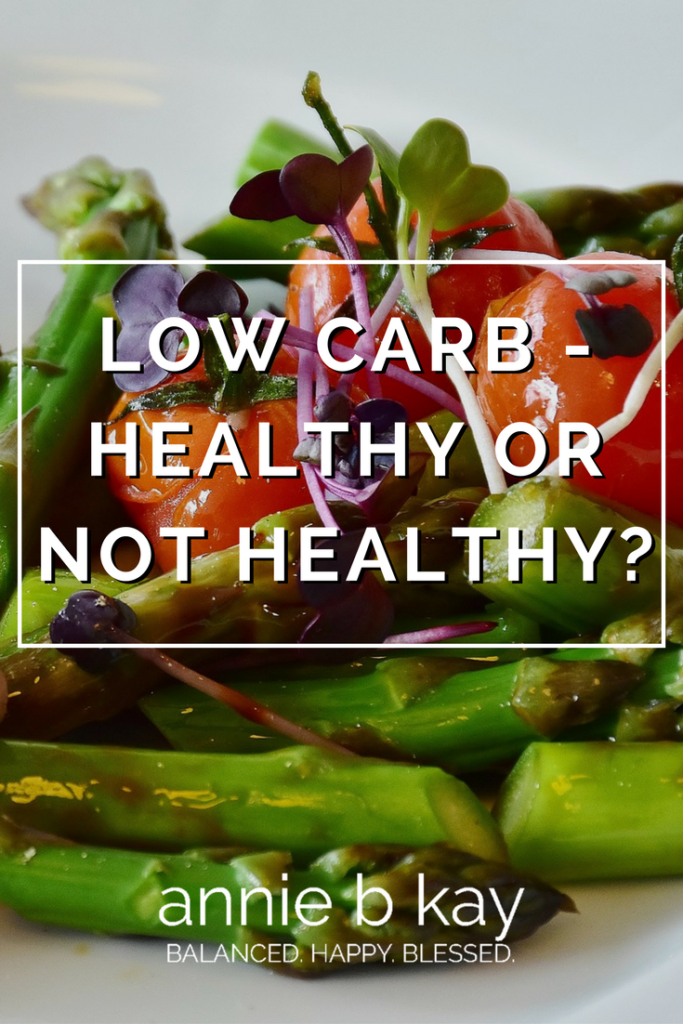
Pinterest
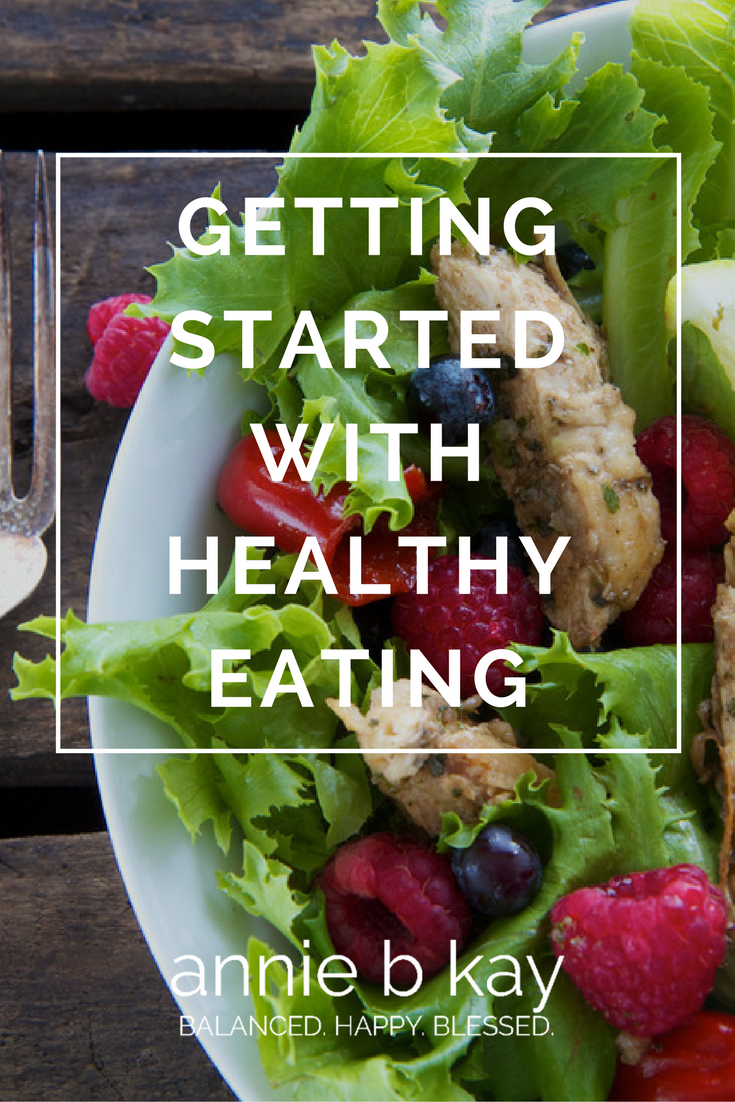
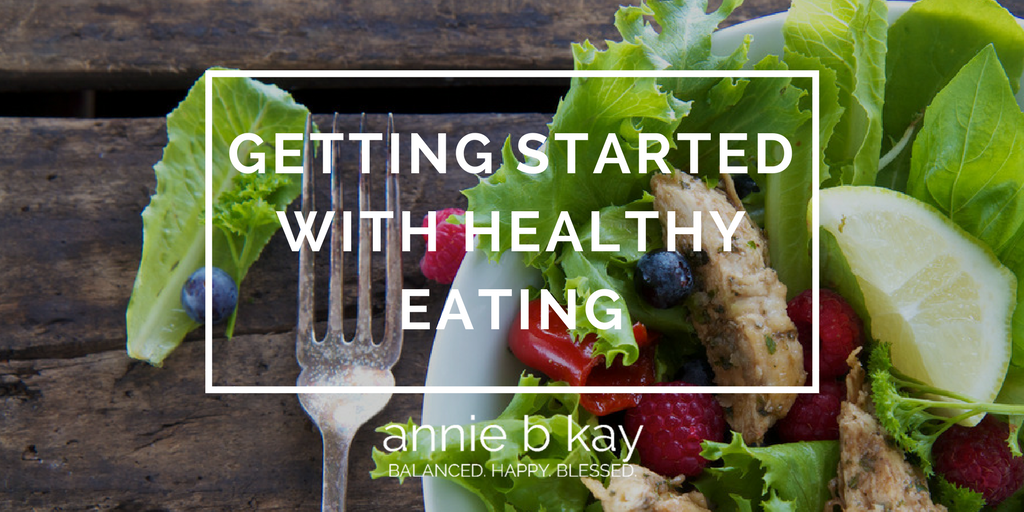
Confused about what’s healthy and what’s not? You are not alone!
It’s a challenge to follow a healthy lifestyle in our anything-but-healthy culture. But for most of us, it’s worth the effort to be the most vibrant, healthy version of ourselves that we can.
No matter who you are – how old, how physically or financially limited – you can improve your life by making healthier food choices, moving more, and connecting with others. As a nutritionist for nearly 30 years, I’ve seen people transform their lives through modest lifestyle changes practiced over time.
Here are a few ideas for laying the groundwork for healthy eating.
- Don’t believe the hype. The idea of a pill, potion or diet that will magically excuse you from the reality of how our human bodies work can feel irresistible. But like low-payment mortgages and other investment schemes we’ve learned so much about in the past few years, if it seems to good to be true, it probably is. The FDA recently warned that some diet aids can actually do serious physical damage.
The only way for the average person to stay healthy over the long haul is to eat a healthy diet that honors their needs (and for most, features plants) and to be adequately physically active. Within that guideline are limitless paths to get there. The pill or diet might help with a jump-start, but eventually, we all live within the laws of our human physiology.
- Take a positive, additive approach. Weight loss or getting healthy is best experienced as an exercise in getting to know yourself and how your body works. One key is to find some joy – some fun, in learning how to care for yourself well. In my decades of counseling people on lifestyle, I find it’s best to start by adding good things – like physical activity, and servings of fruits and vegetables. That way, the foods and activities that don’t serve you (like French fries, donuts and Law & Order marathons) tend to fall by the wayside with less sacrificial pain. There is a way to enjoy what you eat and follow a healthy diet.
Here’s an exercise: on a piece of paper, make a list of things that fuel your life force. List things large (vacation on the beach!) and small (get myself flowers!), expensive and free (call an old friend!) – everything from getting outside, taking a great bath, being active, reading – whatever fuels your passion, or is fun, or feels good. Here’s a tip: people who take excellent care of themselves give themselves things that fuel their life force. And taking excellent care of yourself makes a healthy lifestyle easier and more fun to stick with.
- Know where your journey begins. There is a slew of good (and free) web-based assessment tools to help you figure out what and how much you’re eating right now. That’s really the first step in finding out where you want to go. Step on the scale, find your BMI and see where you are on the sliding scale from underweight to obese. For most of these assessment numbers, see them then set them aside, and focus on the habits. It’s easy to get fixated on “I knew I struggled with weight but now I see I’m obese – I’m no good and it’s hopeless.” When those kinds of thoughts pop up, see if you can turn it around to a positive, like “I knew things were getting out of hand, and now I know the situation and can do something about it – I can do this.” So long as you are focused on positive change and positive habits your life is likely to get better. Everyone has difficulty with something in their life. It’s how you work it in your mind that makes the difference between success and spinning your wheels.
- Remember that with diet, “relapse” always happens. One of my wise teaching friends at Kripalu says “progress not perfection,” and with diet, there will always be a wedding or dinner with friends or just a day when you haven’t eaten well. Often, people feel like they’ve failed when they’re not perfect, and slide into the land of “it’s too hard” and “I can’t do this” and “it doesn’t really matter,” and they give up. It can be months before they try it again. If only they knew that it’s natural not to be perfect! If you ‘fall off the wagon’, dust yourself off, have a glass of water, forgive yourself and get back to practice as soon as you can – the same day, the next morning, but soon. Think about what made healthy eating too difficult – that can be an experiment for next time. That’s how real change happens.
Here’s to your practice of fun and good health.
Learn more…
What next?
Want to stay connected and join others on this path to wholeness?
The best way to do that is to sign up for my monthly newsletter to get tips and resources to support you.
You can also check out opportunities to study with me.
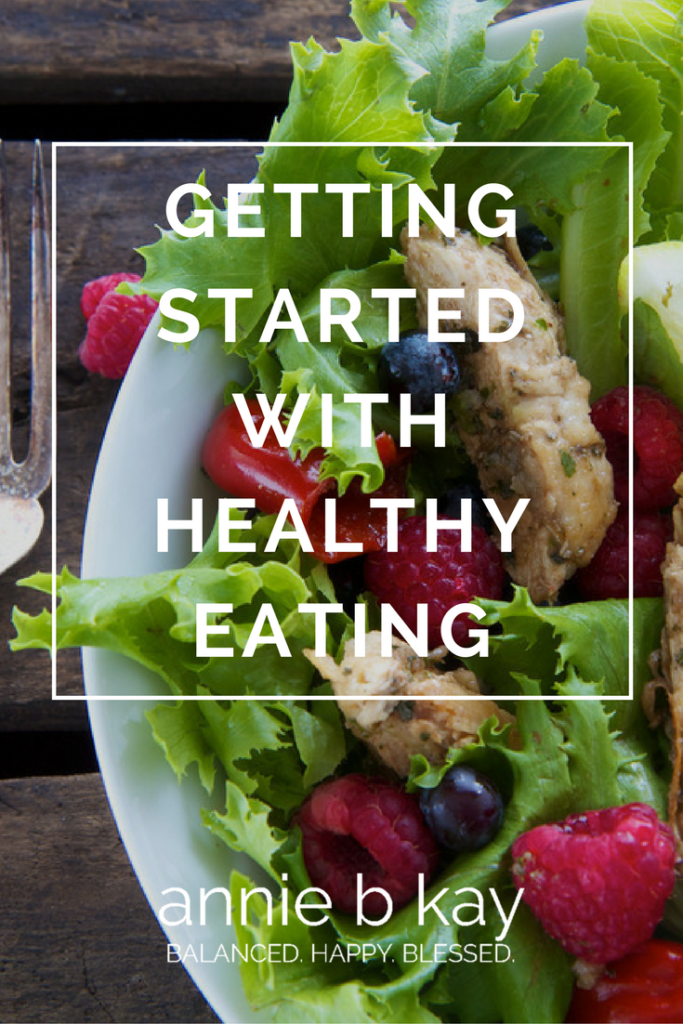
Pinterest
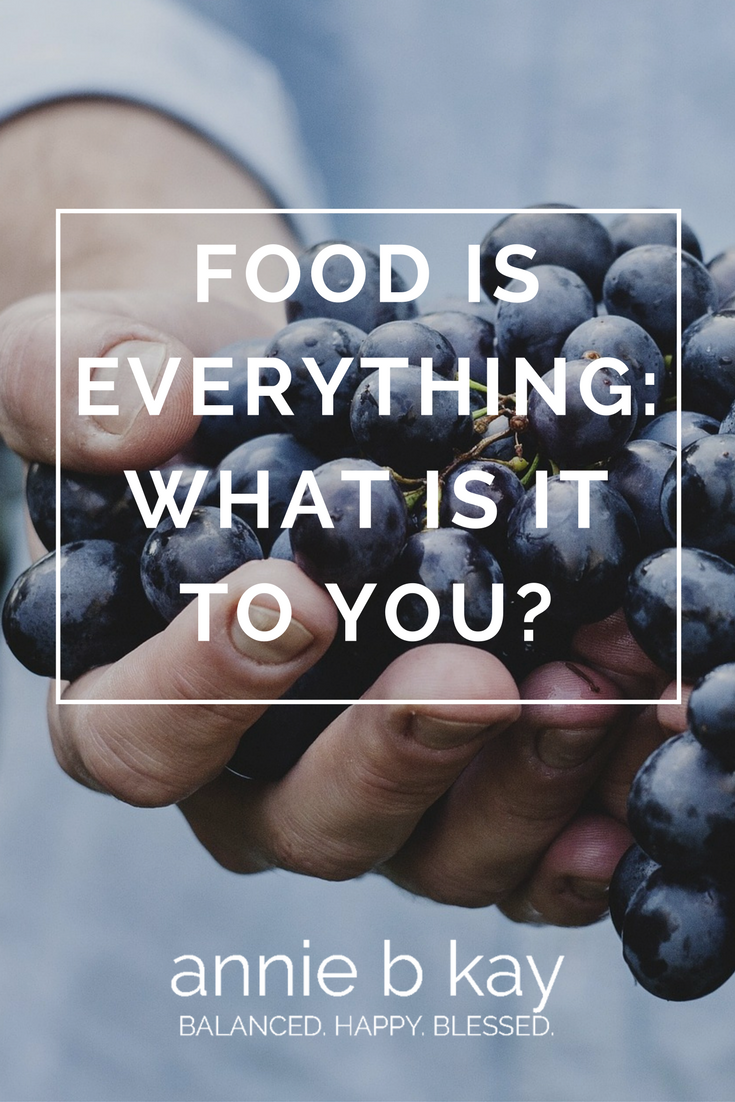
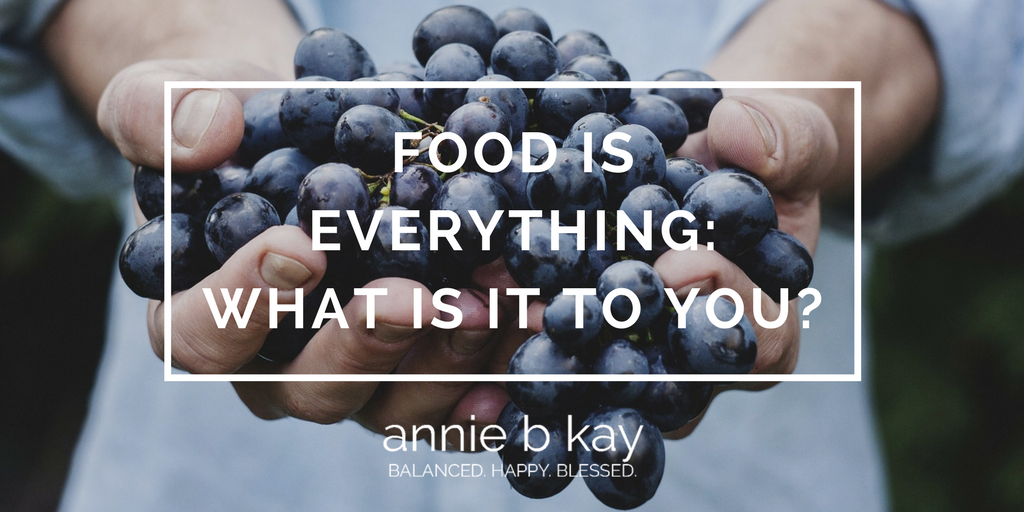
When I first chose to study nutrition at Cornell so many year ago, I could not have imagined the evolution in what we think about when we think about food. Nor could I have imagined the changes in the food we eat in this country.
Food, here and now, is just so everything.
My friend, colleague and visionary Kathie Swift often quotes Jean Anthelme Brillat-Savarin, who was right and prescient when he said: “Tell me what you eat, and I’ll tell you who you are.”
Food is…
Social
It’s the center of most gatherings of family, friends and colleagues. What we feed others communicates how we feel about them and expresses to them who we are. We have intimate dinners, casual nights, celebratory feasts. To be a good friend, feed someone. To show love, feed someone.
Economic
Growing up, the quality of food available not so directly related to income as it is today. Now we have food deserts, over-consumptive malnutrition (the real epidemic of weight, where those without eat a higher-calorie yet lower nutrient-density diet), and food marketing is disguised as real nutrition information or education. If you are poor in America, you just don’t have access to high quality nutritious food. Thank the Lord for WIC and other food assistance, which can close the worst of the gap if used well.
Environmental/Ecological
What you choose to eat impacts the planet and you can’t get around that. Meat is rich in every sense of the word. It is nutrient dense, resource-rich, high-impact, and energetically hot stuff. No inherently evil, but easy to overdo, and human nature seems to make us overdo it in spades. Today we eat twice as much protein as we physiologically need, yet new diet after new diet tells us we need more more more. The truth is we don’t if we cultivate a balanced whole-food active life.
Political
Every 5 years, a big bill works its way through congress. That bill, the Ag Bill, determines to a great extent what America eats. What America eats these days is subsidized GMO soy, factory-farmed meat, dairy, corn (to be made into the high-fructose corn syrup which researchers agree is undermining health on a grand scale). We can change it – the last round had a bit of funding for organic fruits and vegetables, and linking school lunch with farmers’ markets. You can vote on this by calling your congresspeople and insisting on the funding shifts you want.
Emotional
I personally have an emotional relationship with food. Changing my diet takes a long conversation, and a bargain with myself. Do this and I’ll treat myself in this way (often a massage or oil dip at Kripalu healing arts, or a new get-up).
Tactile and Sensual
Food is beautiful. It’s smells, textures, and of course, flavor absolutely thrills most of us. Yum. I’m working on a book project on whole food, and how to make it as easy as possible to eat healthfully. There’s no getting around the need to come into close personal contact with food when it’s whole. You have to cut the bottoms off asparagus and put fresh spears in water. You have to trim herbs and place them in water. You have to crack the egg, (and hopefully, put all the scraps into your compost bucket – wowsaa another spring topic!). We can do things to make cooking efficient and as easeful as possible, but ultimately, you have to revel in the sensuality of whole food.
I could go on – it’s love! So, take a little time considering a two-way relationship with the whole food you cook and eat. As you slice a carrot or dice an onion, take a breath to wonder what the carrot would say to you if you’d listen? Who is that onion, anyway?!
This is why changing your diet is such a huge deal. Because when you change your diet, you change everything. You become someone else, bite by bite. So, be easy on yourself if you are finding it challenging. Notice what’s hard, and press on. Make the healthful choice anyway. If you fall off the wagon for a meal or a day, get right back on. Practice practice practice, not perfection.
Enjoy!
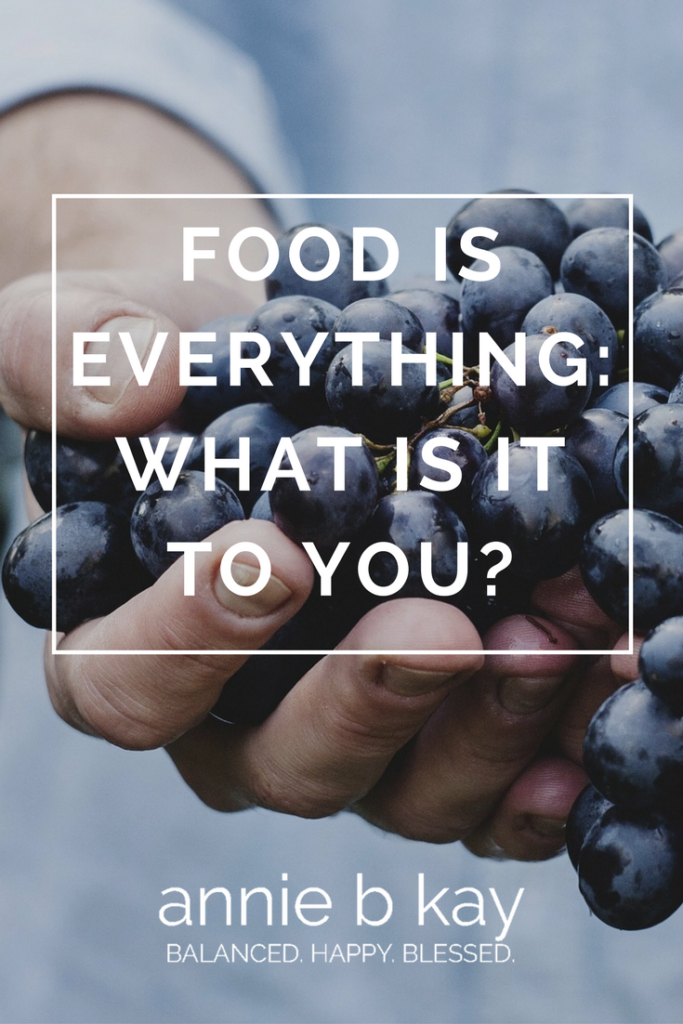
Pinterest















